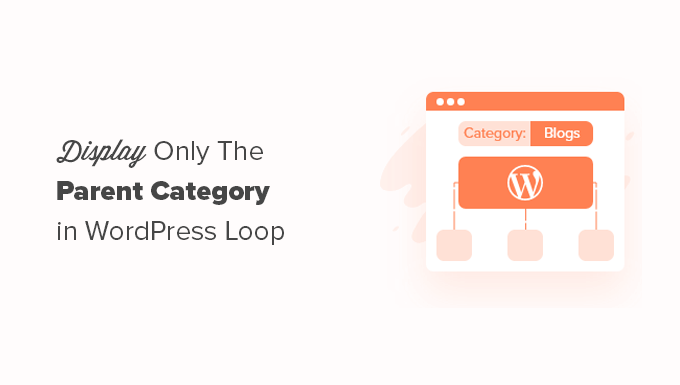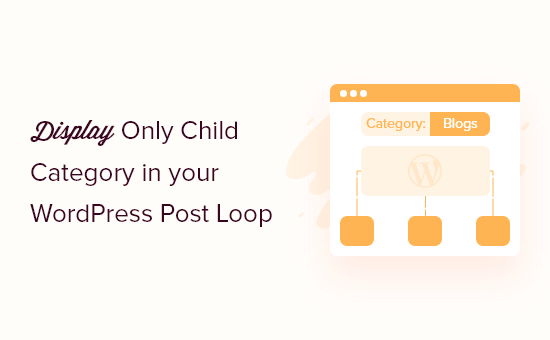One of the great things we love about WordPress is how customizable it is. You can tweak almost every aspect of your site to make it uniquely yours.
But sometimes, you have to admit that one theme just doesn’t have all the capabilities of another. That’s why a lot of our readers ask if it’s possible to use different themes for different parts of their website.
Maybe you want your blog to have a different look than your homepage, or perhaps you need a special layout for your online store. Whatever the reason, we’ve found 2 easy ways to use multiple themes in WordPress, and we’ll show you how in this article.
Why Use Multiple Themes for Pages in WordPress?
When you built your WordPress website, you would have carefully chosen an attractive theme to show off your content. By default, that theme will give every page on your site the same appearance and layout.
But what if you want one section of your site to look completely different? Or perhaps you’d like one or more pages on your site to stand out from the rest.
For example, you might prefer your privacy policy page without a sidebar or use a different layout for your 404 page.
With that being said, let’s take a look at how to use multiple themes for pages in WordPress. We will cover 2 methods, and you can use the quick links below to jump to the one you want to use:
Note: Before you begin, we recommend that you create a complete backup of your WordPress website so you can restore it just in case anything goes wrong, such as code conflicts with different themes.
We also recommend you turn off any caching plugins like W3 Total Cache or WP Super Cache. That’s because caching plugins will sometimes show you an older version of a page, so you won’t always see your latest changes.
With that done, let’s get started!
Method 1: Using Multiple WordPress Themes With a Plugin
In this method, we will use the Multiple Themes plugin to use more than one theme at once on your WordPress site.
This method is best if you have specific themes in mind that you want to use on different sections of your site.
If, on the other hand, you want to create custom layouts for different areas of your website, then method 2 would be the better option for you. It uses a drag-and-drop builder that allows you to create beautiful custom designs for any page or section on your website.
The first thing you need to do is install and activate the Multiple Themes plugin. For more details, see our step-by-step guide on how to install a WordPress plugin.
You should also make sure that the themes you want to use are installed in WordPress. You can only activate one theme at a time, but you can install as many themes as you want. To learn more, see our guide on how to install a WordPress theme.
There are a ton of different options available in this plugin, so we will walk you through 3 of the most common use cases. However, you can use a separate theme for pretty much any page or section on your website.
1. Using a Different Theme for Your Homepage
Upon activation, you should head over to Appearance » Multiple Themes plugin to configure the plugin.
Make sure that you are in the ‘Settings’ tab.
You need to scroll down to the ‘Site Home’ section and then choose a theme from the dropdown menu.
After that, you should click the ‘Save All Changes’ button to store your settings.
That was easy! Your homepage is now using a different theme.
2. Using a Different Theme for Your Blog
Perhaps you are happy with the way your theme looks on blog posts but not your other important pages. You can use one theme for posts and another for pages.
This method will work whether your blog is on your front page or you created a separate page for blog posts. First, make sure that the theme you wish to use for your blog is active.
Next, we will use the same plugin as we did above. Head over to Settings » Multiple Themes plugin in the WordPress dashboard. Once there, you should click on the ‘Advanced Settings’ tab.
You need to scroll down to the ‘Select Theme for All Pages’ section. There, you can select a new theme that will be used when viewing pages on your website.
Make sure you click the ‘Save All Changes’ button when you are finished.
3. Using a Different Theme for Your WooCommerce Shop
Your WooCommerce store will work best when you choose a theme that is optimized for WooCommerce. The default Storefront theme or other leading WooCommerce theme will be used by both your store and website.
But what if you want your website or blog to use a different theme from your store? This is another scenario when you’ll need to use multiple themes.
For this, we will leave your current storefront theme active and then use a different theme for your homepage, pages, and posts.
Like the previous methods, you should head over to Settings » Multiple Themes plugin.
First, you need to change the theme of your website’s homepage, as we did above. While you are in the ‘Settings’ tab, simply scroll down and change the theme for your site home.
Next, you need to click on the ‘Advanced Settings’ tab and scroll down to the ‘Select Theme for All Pages’ section.
Here, you need to change the theme for both pages and posts from the dropdown menus.
You are almost done. But you have one more step to complete if you created a separate page for blog posts.
You need to click back to the ‘Settings’ tab and scroll down to the section that starts with ‘For an Individual Page.’
Next, you should select the same theme from the dropdown menu and then type the URL to your blog page in the ‘URL of Page, Post, Prefix or other’ field.
You can discover the correct URL by navigating to the blog page on your website. It will probably look something like https://example.com/blog/.
Once you click the ‘Save All Changes’ button, you are finished. Your website and WooCommerce store will be using different themes.
How to Customize the Appearance of Your Second Theme
Following the steps above, you selected a second theme to be used on certain parts of your website. But what if you want to customize the appearance of that second theme?
Applying the second theme didn’t change the active theme. That means that if you want to configure the alternate theme, then you will have to temporarily activate it.
For example, let’s suppose that you are using the Astra Theme for your website but selected the Twenty Twenty theme for your blog.
To configure the theme options for Twenty Twenty, simply go to Appearance » Themes and activate the Twenty Twenty theme. Now you are free to make changes to the theme using Appearance » Customize.
You can learn more in our ultimate guide on how to use the WordPress theme customizer.
If you use a block WordPress theme, then you will need to use the full site editor to customize your theme. You can access this feature by going to Appearance » Editor in the dashboard.
You can learn more about this feature in our beginner’s guide to WordPress full site editing.
Once you are satisfied with the theme setup, save your changes and then go back to Appearance » Themes in your WordPress admin panel and reactivate the Twenty Twenty-One theme.
For more advanced theme options, take a look at the ‘Theme Options’ tab on the plugin’s Settings page.
The downside to this method is that it will temporarily change the active theme on all of your web pages while you are customizing the options. To avoid that, you may want to just use method 2 below.
The Multiple Themes plugin is capable of much more complex operations. For example, you can use a different theme for pages matching wildcards or queries. For more information, see the plugin’s support page.
Method 2: Using Multiple Templates With a Page Builder
Another way to create pages that look completely different is to use a drag-and-drop page builder plugin. These plugins let you customize the appearance and layout of every page on your site without using any code like PHP, CSS, or HTML.
This can be a much more cost-effective option because instead of paying for multiple premium themes, you can create as many custom themes as you want for the price of a single plugin.
SeedProd is the best WordPress page builder in the market when it comes to speed and ease of use. It offers 300+ beautiful, pre-made templates and site kits that can be applied individually to different pages.
While there is a free version of SeedProd, for this tutorial, we will use the premium plugin because it has more features and lets you create multiple custom themes.
First, you need to install and activate the SeedProd plugin. For more details, see our step-by-step guide on how to install a WordPress plugin.
Upon activation, you’ll be asked to enter your license key. You can find this information in your account on the SeedProd website.
Now, we will show you 2 options for how you can use SeedProd to have different layouts for different sections of your site.
1. Creating a Custom Layout for One Specific Page
SeedProd can be used as a page builder plugin, so you can create a page with a completely custom layout.
To do that, you should head over to SeedProd » Landing Pages and simply click the ‘Create a New Landing Page’ button.
Now, you get to choose a theme for this particular page. SeedProd comes with 100s of beautiful page templates, and if you like, you can select a different template for each page.
You need to click on the template that you would like to use as a starting point for your page. If you would like to start with a blank page, then simply select ‘Blank Template.’
You’ll be asked to provide a title and URL for the page.
After that, you should click the button labeled ‘Save and Start Editing the Page’ to continue.
This will load the SeedProd page builder interface. This simple drag-and-drop builder will show a live preview of your page to the right and a toolbar on the left.
If you chose the blank template, then you will first need to pick a layout for your page. You can select a layout with no sidebar, have a sidebar on the right or left, or use multiple columns.
On a different page, you could select a totally different layout.
If you chose another template as a starting point, then your page will already have some content.
You can edit and customize that content by clicking on each block. You can also add new blocks to the page using drag and drop.
You can learn more about how to customize the page and add new blocks in our guide on how to create a landing page with WordPress.
Once you have finished creating your page, simply click the dropdown next to ‘Save’ and then click ‘Publish’ to store the page and make it public on your website.
When you create your next page, you can use a completely different template and layout.
2. Create a Custom Theme For Your Website With Different Layouts
SeedProd can also be used as a completely custom theme builder.
Using SeedProd, you get to create custom designs for every section of your website. That means you could choose completely different layouts for your blog vs. the rest of your website or for your eCommerce shop vs. your homepage.
To get started, go to SeedProd » Theme Builder and click on the ‘Themes’ button.
From here, you can choose a theme layout to get started.
They are fully customizable, so you can just use them as a starting point.
When you choose a theme, SeedProd will generate all the necessary templates for different areas of your website.
Each template is fully customizable. In effect, you can make each section look like a totally different theme.
You can also add your own templates that can conditionally be used on different areas of your site.
For example, you could create a sidebar that only gets used on your blog posts. Or, you could create a custom page layout for your product pages only.
For more details on using SeedProd, check out these guides below:
We hope this tutorial helped you learn how to use multiple themes for pages in WordPress. You may also want to learn how to bulk add posts and pages in WordPress and the anatomy of a high-converting landing page.
If you liked this article, then please subscribe to our YouTube Channel for WordPress video tutorials. You can also find us on Twitter and Facebook.



